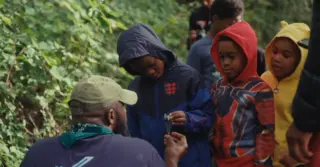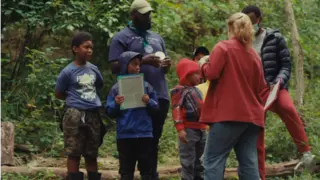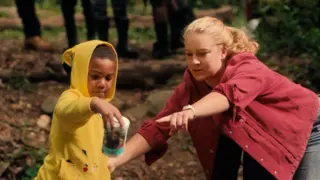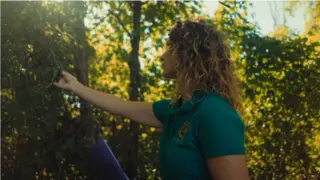
Faces of the Forest aims to show the real people behind responsible and sustainable forest stewardship around the country. And here that purpose takes us beyond the largely rural, commercial tree farmers that supply the paper and packaging industry. In this case, the community is the Stillmeadow Community Fellowship church on the outskirts of Baltimore, Maryland.
An Urban Oasis

Under the leadership of pastor Michael S. Martin, and with the help of educators, forest scientists, volunteers and students from around the area, the church has begun cultivating a ten-acre patch of forest on their land, using it as a place of peace, learning and togetherness.
Education and Community Building

A typical weekend at the Stillmeadow Peace Park brings together many different educational and nonprofit groups who gather for service projects including, building desks, painting furniture, weeding and pruning, and setting up music and art lessons for grade schoolers.
One of the biggest proponents—and frequenters—of the peace park is Terris King II, a kindergarten teacher and a community and faith leader, who brings groups of young children through the forest to learn about nature and help conduct experiments like sampling for soil and water quality.

Viewers will also meet a graduate student and a U.S. Forest Service scientist who specializes in urban forestry and whose work includes important data collection at Stillmeadow. They help contextualize the important community building being done there and reflect on the things that make urban forestry unique—and vital.
And that’s the lesson that Stillmeadow ultimately has to offer: that there is a deep connection between the kinds of forestry that helps keep the paper and packaging industry sustainable, and the work being done to steward and nurture the forest of this park.
While it’s mostly small, family-owned forests that supply the renewable fiber that makes the paper and products you use every day, this urban working forest relies on the same principles that make for responsible and sustainable forest stewardship, whether that’s 10,000 acres in the remote upper Midwest or 10 acres in a post-industrial city.
The stewards of Stillmeadow are rehabilitating soil. They’re worried about invasive species and diseases that affect tree health. They want clean water on the stream that runs through the forest. They care about wildlife habitat. They want a forest that’s healthier ten years from now than it was ten years ago.

The measures they take to protect and grow their forest are very much like those undertaken by working tree farmers. The efforts by the paper industry and private forest owners, like tree farmers, have resulted in nearly twice as much wood being grown each year in the U.S. as being harvested. According to the U.S. Forest Service, approximately 3.5 million trees are planted daily, totaling more than one billion trees a year.
Whether it’s tree farmers, the paper industry or Stillmeadow, all are about a holistic plan that thinks in years and decades, not weeks and months.
These are wonderful people—selfless, kind, capable and driven—doing wonderful work in a city that vitally needs more servant-leaders like this. Stillmeadow is a model project for everyone who cares about building communities in harmony with nature, and you’ll be grateful to spend a little time with them and their lovely forest.






